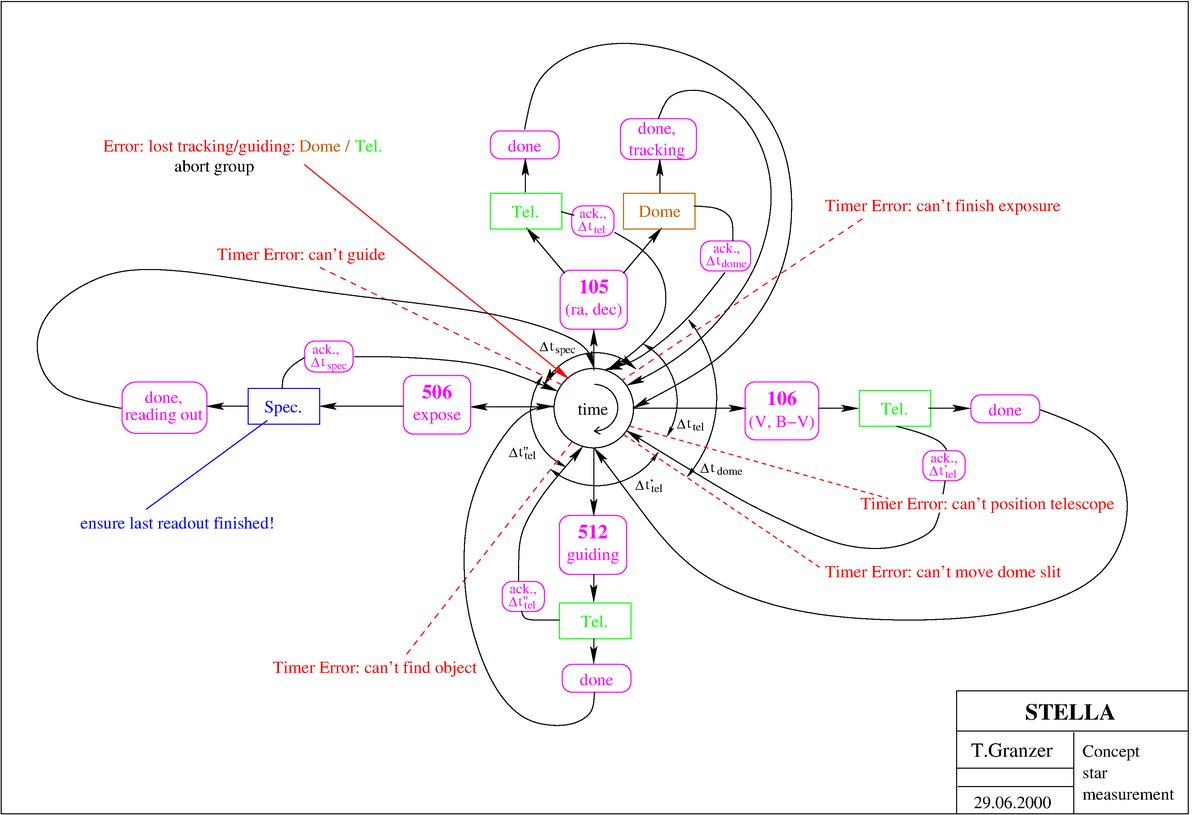Autonomous observing
Astronomical observations are sometimes rather repetitive. It was realized early on that freeing the astronomer from the tedious task of night observations make room for the more inventive parts of the career, working with the data to form new insights and understandings.
Especially photometry, where the telescope commutes between target-of-interest and a comparison star seems a splendid target for automation. Consequentially, the early 80ies saw the installation of the first automated photoelectric telescopes; one of the most successful groups here is Fairborn observatory, originally sited at Mt. Hopkins. The AIP has strong ties to Fairborn, refer to our APT project page for details.
These early successes sparked the idea of tackling more complicated observations in an automated fashion, an idea which finally lead AIP to the installment of STELLA, which was the world-wide first high-resolution spectrographic telescope.
This page features the basic ideas and approaches that made this venture a success.
If faced with a complicated task, it is always a good idea to try to divide the single exercise into smaller steps, down to an atomic level, where further splitting is not possible. Eventually, one will find that this tiny constituents can be combined in various fashions to build a template library of possible observations. New observing strategies can then be implemented with relative ease by combining the hitherto defined building blocks.
So, what can happen during a night of (spectroscopic) observations? This graph shows the result of our initial brainstorming. It dates back to 2000, but essentially is still valid.

Possible building blocks of a night of observing with a spectroscopic telescope. Time runs clock-wise, starting at North with the beginning of the night defined by reaching a certain solar height. During daytime, some calibration tasks along with maintenance steps may be required.
A single observation, in turn, can be split further into different steps, as shown in the picture below. Again, time runs clock-wise starting from North. Note the significance of error handling.

Possible execution of a single observation: Start by moving the telescope and the dome to the targets, start acquiring once both devices have reached their target position, after acquisition start guiding, followed by taking an exposure. The observation ends with closure of the shutter; read-out may occur during the move to the next target. Possible error conditions are outlined; they lead to alternate workflows to load.
Once sub-steps are identified, one should agree on a way to describe any observation as a work-flow of these generic building blocks, called commands. In SCS (STELLA control system), we realize this template library as a collection of XML-styled work-flows. Commands are conditionally combined in a simple manner: Task that may run in parallel are enclosed in <Task></Task> tags, while everything within <Step></Step> tags is executed in strict sequential order. Steps may be repeated with optional while attributes, task start as soon as their Condition becomes true. Task end once their Completed condition is fulfilled. See Granzer, AN 325, 513 (2004) for details.

Excerpt of an XML-coded workflow template. Task are executed in parallel, whenever their Conditions are fulfilled. Steps are purely sequential and may be executed as a loop.
In the following, we collected a few pages on how-to:
- How to use pointing model to reach higher blind-pointing accuracy.
- How to acquire a target by matching FoV-images to a catalog.
- How to focus a telescope.
- How to auto-guide on a star.